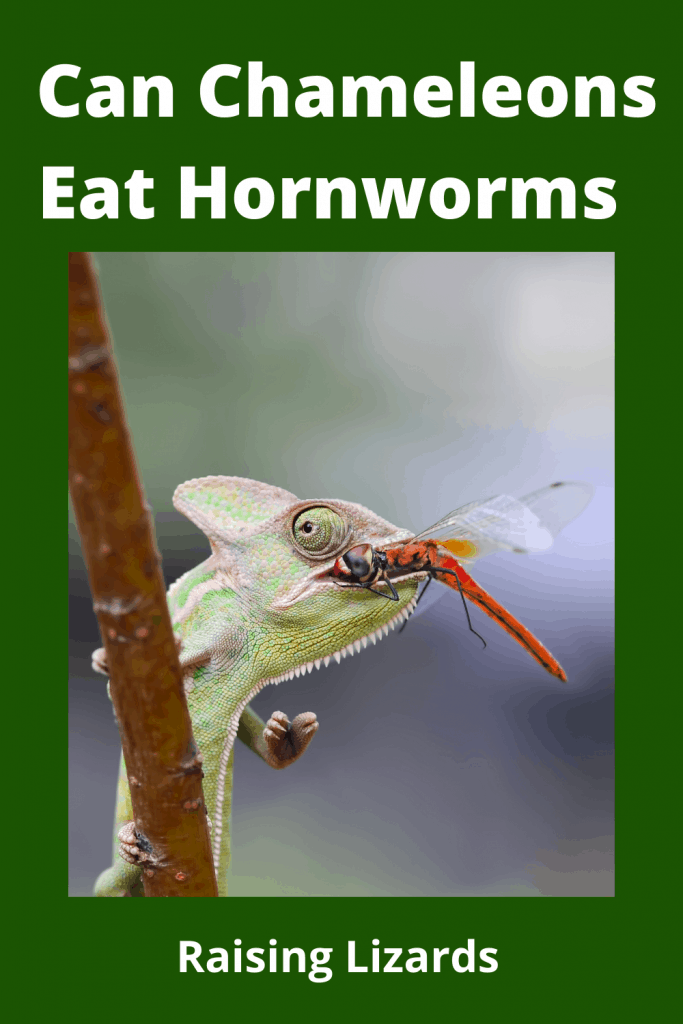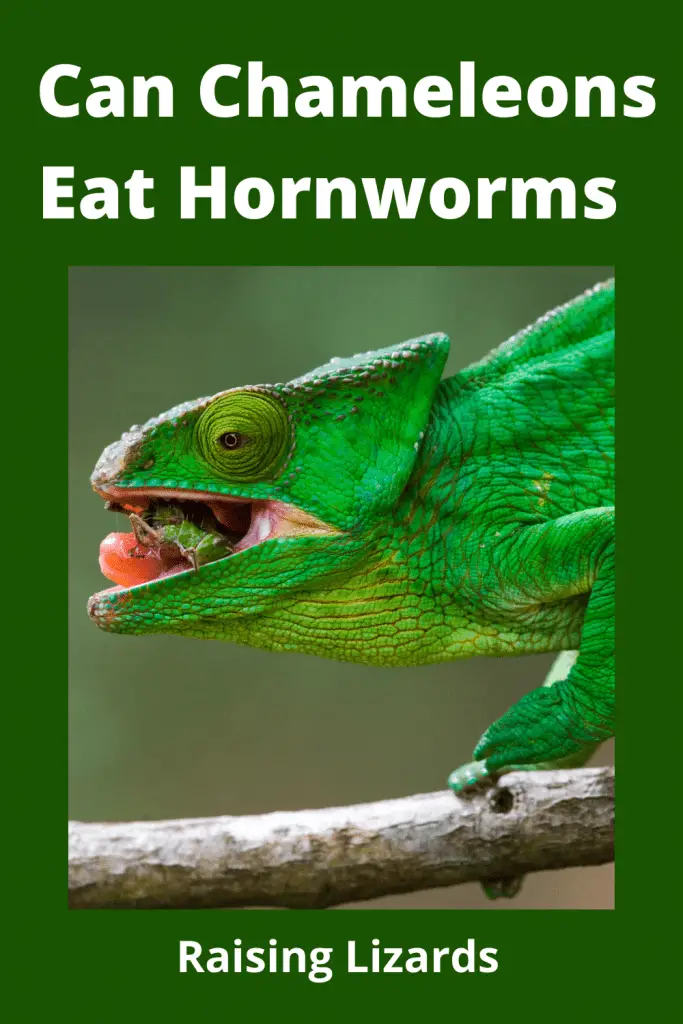Can Chameleons Eat Hornworms / Feeding My Chameleon
Can Chameleons Eat Hornworms / Hornworms are great feeder insects for virtually all types of reptiles, amphibians, and invertebrates including, but not limited to, turtles, frogs, scorpions, spiders, and lizards? When you receive them, your hornworms will not be full-grown. At this smaller size, they can be fed to smaller animals or juvenile animals. Once they have grown a bit and plumped up, your hornworms will be especially great feeders for animals that live in dry, arid environments where getting water from food is a requirement.
Examples of these types of desert species that love to eat hornworms are lizards, collared lizards, agamas, tarantulas, and even scorpions. Chameleons are also big fans of hornworms. We cannot stress enough that hornworms contain lots of water, so they are great to help your chameleon stay hydrated. Jump to Are Chameleons Hard to Take Care Of? Ultimate Guide
Chameleons are carnivores, which means they consume animal matter. They will not consume vegetables or fruit. Some chameleons will very occasionally eat leaves, which is why it’s important any live plants in the cage are non-toxic.
Some of the bigger species of chameleon have been known to eat small rodents such as mice, but I don’t advise offering live mice because there’s a risk one could injure your pet lizard with a bite. Pinkie mice, which are new-borns, are fine to offer occasionally to the larger species if you’re so inclined.
I personally do not feed chameleons any rodents. Interestingly, the Miller’s chameleon is also known as the “Bird-eating” chameleon, due to some anecdotal stories of their eating small birds. Parson’s chameleons, another species that get massive in size, has been known to eat small finches in the wild. While this may sound surprising, keep in mind, chameleons live in trees, and they’re opportunistic feeders.
In the wild, various bugs form their primary diet. Chameleons will eat a variety of insects in captivity, but which are best for them nutritionally and otherwise? Below I’ll cover some of my most recommended, and least recommended, feeder insects for your pet chameleon.
Hornworms
There are two kinds of hornworms that can be used for chameleon food: the tomato and the tobacco hornworms (they are named for the plants they feed on). You can have them shipped to you live, in little plastic containers. Then you would feed them and let them grow into large worms.
If you let them pupate, they will turn into hawk moths. Hornworms are a succulent feeder insect that my chameleons eat with gusto. These are those bright green caterpillar-looking worms that are also known as “Tobacco” worms because they frequent Tobacco fields in the South.
The sharp-looking “horn” on them is just a soft, harmless, fleshy decoration. They are usually purchased as 1-inch juveniles, but they grow to become 3-4-inch beasts. These worms are low in fat, high in calcium, and extremely high in moisture (80%-85%).

The main reason I feed these to my chameleons is because of the moisture and hydration they provide, especially for newly imported chameleons which are usually somewhat dehydrated from the trip. They provide a nice hydration boost for your established pet chameleon as well, which is why I include them as a regular fixture in my feeding regimen.
You certainly don’t need to feed them to your chameleon, it’s just something I choose to do. They usually arrive in cups with pre-mixed “hornworm chow” affixed to the bottom, but just be aware that they will eat tomatoes as well (just do not feed them tomato leaves).
Other Food Sources of Chameleon Lizards
Crickets
These are also the best staple food for chameleons. The captive diet of all my chameleons is comprised of approximately 90% crickets, and I’ve been very blessed with a tremendous amount of success keeping, breeding, and raising chameleons for years on this cricket-based diet. Variety is one’s diet is a great thing, and I’ll cover a few other excellent feeder insects as we progress, but there’s really no need to reinvent the wheel here.
Most chameleon breeders, if not all, feed their chameleons a cricket-based diet. They are nutritious, low in fat, high in protein and calcium, easy to keep, inexpensive, and very active. When you put crickets into your chameleon’s cage, it’s almost like they know what to do they usually immediately start climbing up the screen sides of the enclosure, at which time the lizards start picking them off one by one. You will recall that I mentioned my chameleons eat crickets 90% of the time, but what about the other 10%? Well, that is composed of roaches and hornworms.
Roaches
Roaches are a great additive for chameleon diets as well but there are quite a few other varieties to choose from as well. Each species of roach has its advantages and disadvantages, although I can’t think of a single disadvantage with Dubias. Roaches are super high in protein, low in fat, simple to maintain, and inexpensive.
Roaches don’t climb smooth surfaces, they don’t make noise, they don’t bite, they don’t fly, and they don’t jump.
Many chameleons are ravenous for these, so I highly recommend giving them a try. I have some chameleons that grab them as soon as I place them into the cage and others that grab them right from my fingers.
Madagascar hissers are considerably larger, and they can climb smooth surfaces, as well as make a “hissing” noise be forcing air out of their bodies, although they are harmless. Madagascan chameleons seem to relish them more than other species, but they are another feeder that is worth trying. They make a hearty meal for your chameleon.
Waxworms
They are not an ideal staple food for chameleons because of their relatively high-fat content, which is higher than that of crickets, mealworms, giant mealworms, super worms, hornworms, and roaches. They are ok to offer occasionally, especially for any chameleon that needs to put on a little extra weight. I offer waxworms to some juvenile chameleons that are growing quickly, and sometimes to females that have recently laid eggs.
They are high in protein and calcium, and like hornworms, they’re full of moisture and are soft-bodied which makes them easy to digest. They don’t eat anything, either. Keep them at room temperature, and do not put them in the refrigerator. Most chameleons eat waxworms with delight.
When I do offer them, I usually place them one-by-one onto the artificial vines inside the chameleon’s cage. The waxworms generally just crawl up and down and around until they get hammered by a speeding tongue.
Mealworms, Giant Mealworms, and Super Worms
These are also eaten by chameleons, but not to the extent of other feeder insect options. I rarely if ever offer them to my chameleons, mainly because the other options are so much better in my opinion. Again, why reinvent the wheel? Super worms and giant mealworms will usually climb the screen cage walls, which is nice because it allows the chameleons to eat them easily. If you do choose these as chameleon food, you may want to use in a dish instead. ( These are called Feeder Cups – so you can gauge how much feed your Chameleon is getting)
Catching Your own Chameleon Food
While I do not personally catch local insects for my chameleons to eat, if you have the ability, it’s a highly encouraging activity that will add a lot of variety to your chameleon’s diet. Grasshoppers are often a favorite food for chameleons, just snip off the hard part of the legs prior to feeding them to your chameleon.
Make sure the area you are collecting is free of all pesticides. One strategy is to have another person with you, and each holds one side of a blanket. Then, just walk briskly across the field, letting all the feeder insects jump and fly into the blanket as you go. When you are finished, fold up the blanket quickly and start sorting. Zoo Med used to have an insect catching product that trapped live bugs into a cup reservoir at night using a light to attract them. It never worked for larger insects, but it did well for small ones. Maybe 15-30 per night.
Supplementation
Supplementing what your chameleon is eating with quality calcium or multivitamin is highly advised. The best chameleon calcium powder is Miner-All by Sticky Tongue Farms. Also, do not mix calcium with multivitamins in the same feeding, use one or the other to avoid diminishing their usefulness.


